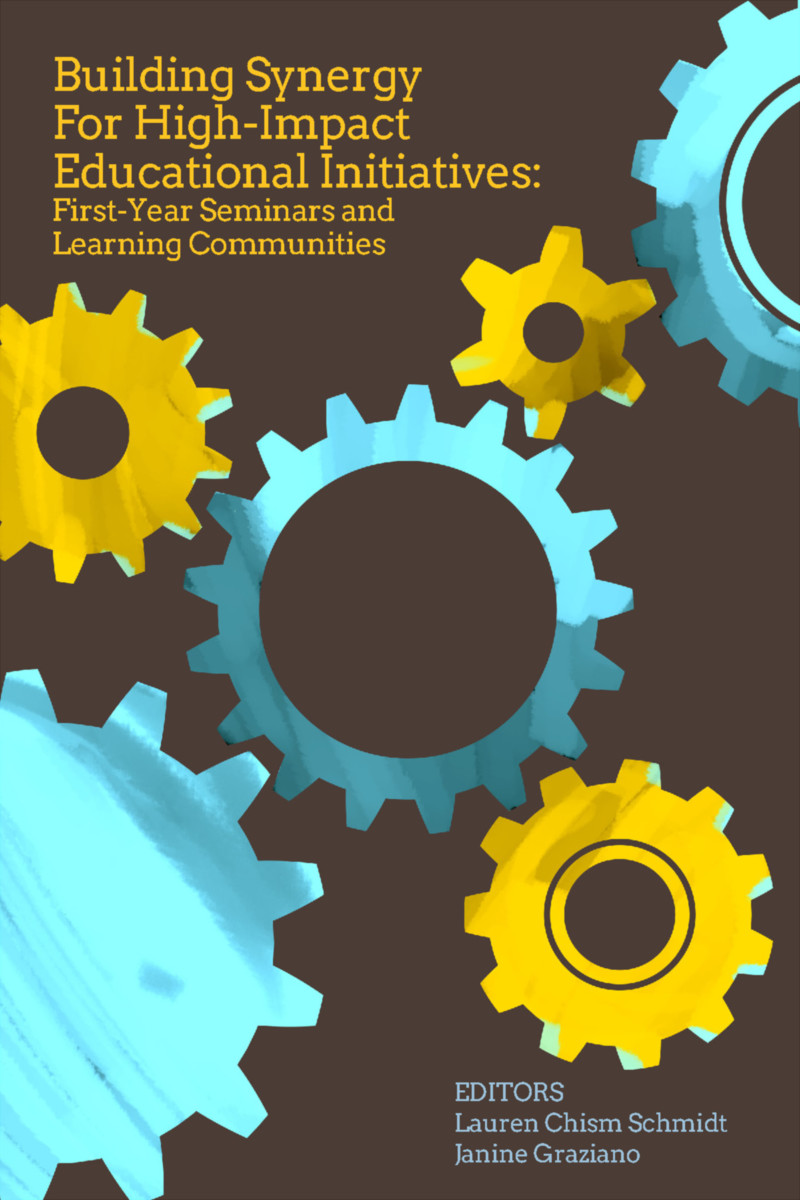PROMOTING SCHOLARSHIP, INFORMING PRACTICE, BUILDING CONNECTIONS
Building Synergy for High-Impact Educational Initiatives
First-Year Seminars and Learning Communities
E-books are now distributed via VitalSource
VitalSource offer a more seamless way to access the ebook, and add some great new features including text-to-voice. You own your ebook for life, it is simply hosted on the vendor website, working much like Kindle and Nook. Click here to see more detailed information on this process.
- Publisher
National Resource Center for The First-Year Experience and Students in Transition - Published
17th May 2016 - ISBN 9781942072133
- Language English
- Pages 212 pp.
- Size 6" x 9"
- Images tables & figures
- Publisher
National Resource Center for The First-Year Experience and Students in Transition - Published
17th May 2016 - ISBN 9781889271989
- Language English
- Pages 212 pp.
- Size 6" x 9"
- Images tables & figures
Library E-Books
We are signed up with aggregators who resell networkable e-book editions of our titles to academic libraries. These editions, priced at par with simultaneous hardcover editions of our titles, are not available direct from Stylus.
These aggregators offer a variety of plans to libraries, such as simultaneous access by multiple library patrons, and access to portions of titles at a fraction of list price under what is commonly referred to as a "patron-driven demand" model.
- Publisher
National Resource Center for The First-Year Experience and Students in Transition - Published
17th May 2016 - ISBN 9781942072140
- Language English
- Pages 212 pp.
- Size 6" x 9"
- Images tables & figures
Published in partnership with the Washington Center for Improving the Quality of Undergraduate Education
First-year seminars and learning communities are two of the most commonly offered high-impact practices on U.S. campuses. The goals of these initiatives are similar: helping students make connections to faculty and other students, improving academic performance, and increasing persistence and graduation. As such, it is not surprising that many institutions choose to embed first-year seminars in learning communities.
This volume explores the merger of these two high-impact practices. In particular, it offers insight into how institutions connect them and the impact of those combined structures on student learning and success. In addition to chapters highlighting strategies for designing, teaching in, and assessing combined programs, case studies offer practical insights into the structures of these programs in a variety of campus settings.
"Building Synergy for High-Impact Educational Initiatives is a virtual 'how to' manual for designing, implementing, and assessing a combination of two powerful high-impact practices—first-year seminars and learning communities. Recognizing that context matters, Chism Schimdt and Graziano offer us the bonus of case studies, preserving the unique voice and character of both the writers and the programs surveyed."
Jack Mino, Coordinator, Learning Community Program, Holyoke Community College
Tables and Figures
Foreword—Tracy L. Skipper
Introduction—Janine Graziano and Lauren Chism Schmidt
Part I: Rationale for and Implementation of Combined Programs
Chapter 1: The Case for Connecting First-Year Seminars and Learning Communities—Ashley Finley and George D. Kuh
Chapter 2: National Practices for Combining First-Year Seminars and Learning Communities—Jean M. Henscheid, Tracy L. Skipper, and Dallin G. Young
Chapter 3: Administering Combined First-Year Seminar and Learning Community Programs—Nia Haydel and Liya Escalera
Chapter 4: Teaching in Combined Programs—Lisa Dresdner and Ruthanna Spiers
Chapter 5: What Should We Be Assessing and Why? —Michele J. Hansen and Maureen A. Pettitt
Part II: Contexts for Implementation: Models From Two- and Four-Year Institutions
Case Study 1: Inviting the Mother Tongue and a First-Year Seminar to Promote Success Among Spanish-Speaking ESL Students—Bronx Community College
Case Study 2: The Metro College Success Program: Redesigning the First Two Years of College—City College of San Francisco and San Francisco State University
Case Study 3: The Targeted Learning Community: A Comprehensive Approach to Promoting the Success of First-Year Students in General Chemistry—Kennesaw State University
Case Study 4: Common Courses: A Developing Linked Coursework Perspective—The University of South Carolina
Case Study 5: Need a Little TLC? Incorporating First-Year Seminars in Themed Learning Communities—Northern Illinois University
Case Study 6: Writing Across the Curriculum Through Community Engagement: Exploring the Foster Care System in a Thematic Living and Learning Community—Cabrini College
Case Study 7: Advancement via Individual Determination (AVID) —Mt. Hood Community College
Conclusion—Lauren Chism Schmidt and Janine Graziano
Index


